This Cool Casting Trick Helped Me Catch A Fish Of A Lifetime [“Dart Cast”]
- By: Luke Simonds
- on
- Found In: Fishing Tips, Inshore Fishing
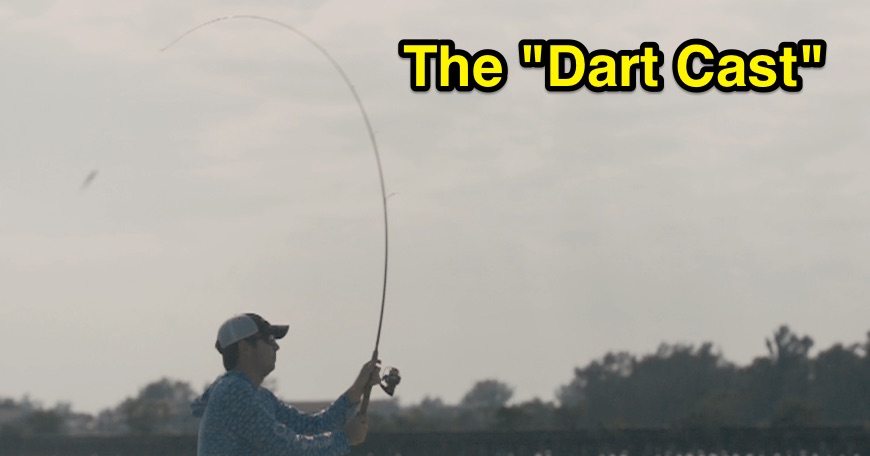
Casting technique is an extremely important aspect of fishing that often gets completely overlooked.
Just think about how much attention goes towards a golfer’s swing in the golfing industry… there are even countless items that golfers buy simply to help them have a more effective swing.
Most fishermen believe that once they know the basic mechanics, that’s all they need to know.
But that simply is not true… and I can say that because I know from experience.
I fished for many years before I ever put much thought into my casting technique.
The first time I had to was when I got serious about learning how to cast out my entire fly line when flyfishing.
And then I realized that the science behind maximizing casting distance in flyfishing by utilizing the rod’s ability to store and unleash power can be applied to spinning tackle too.
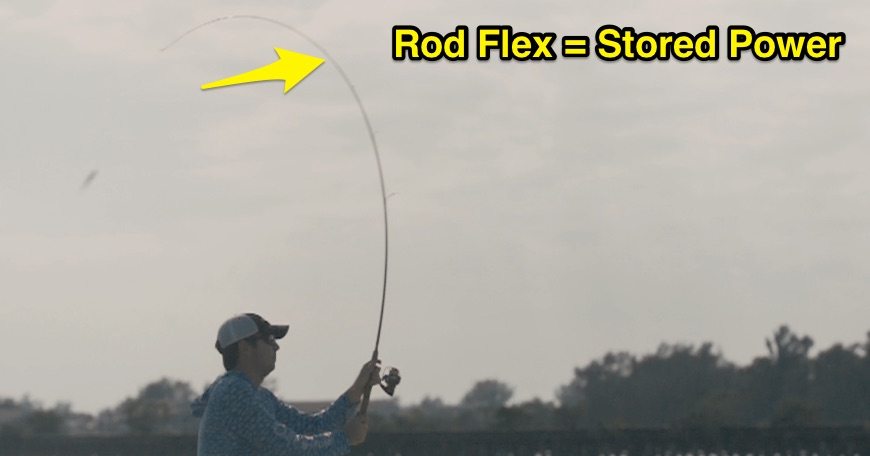
And the resulting casting technique that I’ve since used for spinning tackle has enabled me to do the following:
- Cast Further
- Increase Accuracy
- Expend Less Effort
So I put the video below together so that you can see how it in action and also learn the physics behind why it works.
The “Dart Cast”
As you’ll see in the video below, this unique casting technique will enable you to maximize your accuracy while increasing the distance in casts with minimal effort.
We call this cast the “Dart Cast” because its core benefit is that it allows your forward motion to be just like what a dart thrower does to achieve maximum accuracy and precision.
Watch the video below because it shows it in action with a fish of a lifetime catch in addition to some very helpful slow-motion footage analysis that will help you see exactly how this cast works.
CLICK HERE to learn more about our “Casting Mastery” tutorials
Conclusion
Given how important casting truly is for fishermen who want to maximize their fish catching, we much always be mindful to make any needed adjustments in our casts.
Even if the adjustments result in just 10 extra feet of casting distance, that equates to an entire football field of added strike zone coverage every 30 casts.
And best of all, that extra football field of distance is typically the best strike zone area due to it being farthest away from you were the fish are much less likely to have any idea that danger is in the area.
So if you are serious about making sure that you’re maximizing the following in your casts:
- Max Distance
- Max Control
- Max Efficiency (Less Effort)
Then take advantage of our casting challenge offer [learn more].
I highly recommend giving it a shot because you simply do not know when your fish catch of a lifetime opportunity like the snook from the 3rd-floor balcony will come.
It’s of course best to be prepared so that you don’t miss out on a great catch.
Any questions?
Let us know in the comments.
Fish On!
P.S. – If you think your angler friends or fishing networks would like to see this, please Tag them or Share this with them. You Rock! Pa-POW!
Related categories:
STOP WASTING TIME ON THE WATER!
Do what the “SMART ANGLERS” are doing and join the Insider Club.
Here’s what you’ll receive today when you join:
- Weekly fishing reports and TRENDS revealing exactly where you should fish every trip
- Weekly “spot dissection” videos that walk you through all the best spots in your area
- Exclusive fishing tips from the PROS you can’t find anywhere else
- Everything you need to start catching fish more consistently (regardless if you fish out of a boat, kayak, or land).

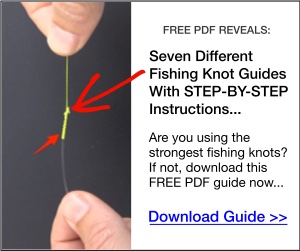


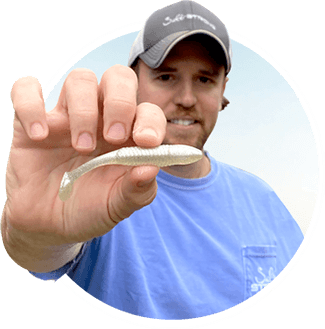
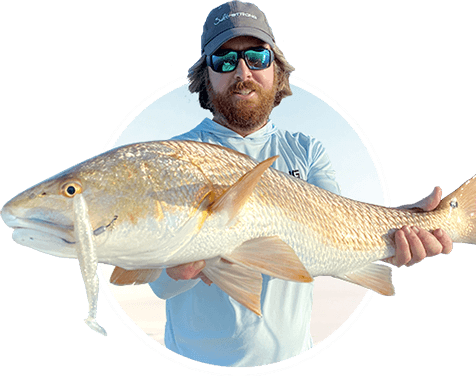
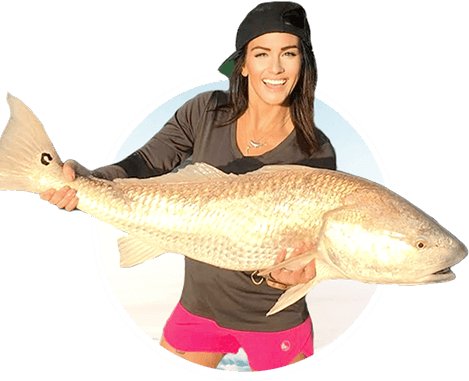
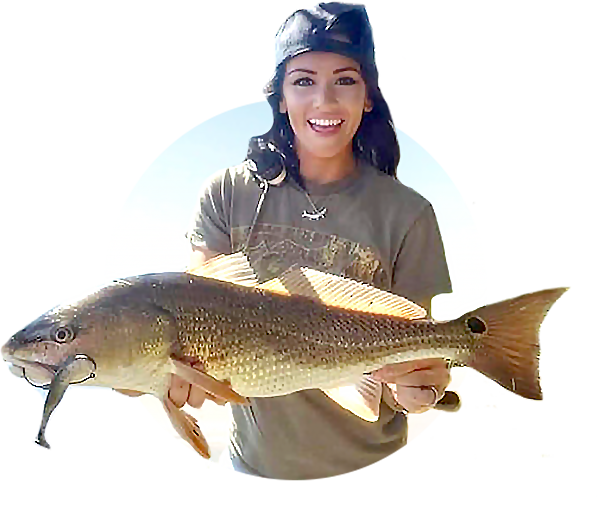
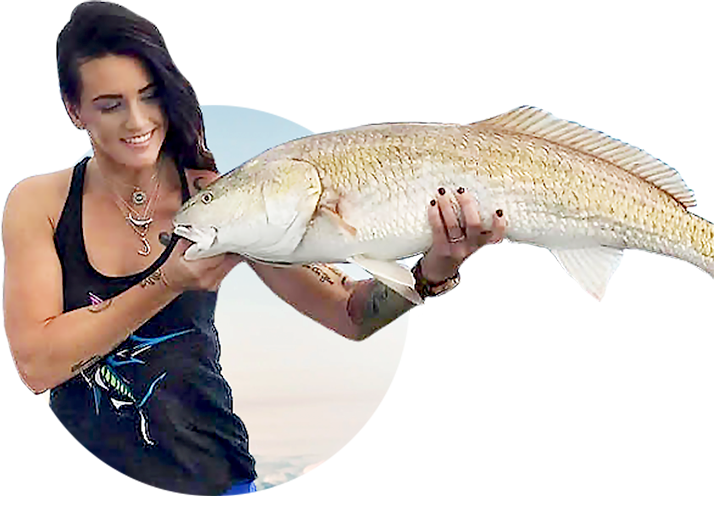
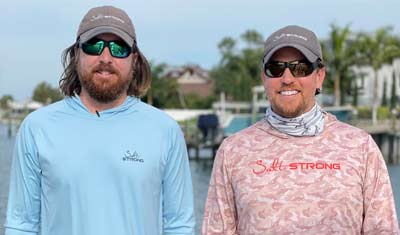
I am entertaining buying a Slot machine rod and a Diawa Saltest MQ 3000D XH reel. Is that a good pairing for inshore fishing?
That reel will work nicely, but I recommend going with a 2500 BG MQ because you’ll save some money without losing much at all in terms of performance… I’d use the 3000 Saltest on a Medium Heavy power rod vs. a medium power rod like the Slot Machine.
What rod are you using on this? Thanks
I was using the TFO Pro Medium powered 7’6″ rod for the balcony snook catch: https://fishstrong.com/products/tfo-pro-professional-spinning-rods?variant=40649101967534
And during the slow-mo footage, I was using an 8′ G. Loomis E6x to show how rods flex and release.
I have a question on casting. My husband says never run the leader up the eyes of the rod…. so I end up with 2 to 3′ of leader before I cast. I have to go behind the boat or motor to then have enough umph to get it out. What do we do about the leader?
The rod tip will damage your leader knot and/or your swivel will damage your rod tip if you reel too far. The long leader should help you load the rod on the backswing so you shouldn’t need much oomph to get your bait out there.
I spool braid on spinners and add about 20′ to 30′ of mono with an FG knot. That mono is a “shock leader” that’s typically twice the test strength of the braid. For 15# braid the shocker is 30# mono. For 30# braid a 50-60# mono shocker, for any heavier braid the shocker is always 80# mono. A super small Spro swivel (#5 125lb, or lots smaller) is tied to the end of the shocker with an improved clinch knot. The #5 will easily glide through a 10 ring rod tip top when it’s time to wind back on the spool when fishing is over, but is always kept forward of the rod’s tip top for casting. A payload drop off the rod tip of half to three quarter of the rod length will increase casting distance if a proper casting technique is employed and well executed. Excess shocker mono is wound on the spool and a lure rig or bait rig is clipped onto the shocker’s swivel. Casting for distance requires a technique that will suit the tackle – the rod, reel, line, and payload weight and physical size. For lures, they are open loop knotted with a floro or mono bite leader that’s clipped to the shocker swivel. For weight ‘n’ bait, the leader type and strength depends on the targeted fish, where sharking will require a hefty mono trace to a wire bite leader.
Are you meaning “20-30” inches? I think I misread it and I was trying to imagine 20-30 feet of leader. Now it makes more sense. Not trying to correct you or anything, just trying to stop other literal dummies like myself to avoid confusion. Thanks for the setup tip, Rob.
Yes, the recommendation was supposed to specify inches… sorry about that.
I noticed that you don’t pull the rod toward you with your bottom hand for more leverage, like I was taught. I will try your technique next time I’m out. I had watched that “3 story Cast” when it first came out & couldn’t believe it! I was laughing along with Joe. That got me “hooked” on Salt Strong!
Thanks for making time to leave the nice comment Bob! Glad to see that you got a good laugh from the balcony snook video:)
I tried this method. Accuracy. What fun! Lake out back is perfect for practicing! Practical too.
So glad to see that you’re enjoying this casting technique!
Thats a great technique. Great video.
Thanks Gary!
thats a cool cast
Thanks Mark!
Rip Current Statement in effect until Thursday, 8:00 PM EDT. Source: U.S. National Weather Service
LESS
…HIGH SURF ADVISORY IN EFFECT UNTIL 8 PM EDT WEDNESDAY…
…HIGH RIP CURRENT RISK NOW IN EFFECT THROUGH THURSDAY EVENING…
* HIGH SURF…5 feet or higher.
* HIGH SURF TIMING…Now into Wednesday evening.
* HIGH SURF IMPACTS…Dangerous breaking waves and minor beach
erosion possible.
* RIP CURRENT TIMING…Increasing wave action from Hurricane Laura
will create dangerous rip currents through Thursday.
* RIP CURRENT IMPACTS…Rip currents can sweep even the best
swimmers away from shore into deeper water.
PRECAUTIONARY/PREPAREDNESS ACTIONS…
Inexperienced swimmers should remain out of the water due to
dangerous surf conditions.
Swim near a lifeguard. If caught in a rip current, relax and
float. Don’t swim against the current. If able, swim in a
direction following the shoreline. If unable to escape, face the
shore and call or wave for help.
Would you recommend the same length rod to a person who is 5′ to say 5.6 to someone like me who is 6’2″? I kayak fish and when I get longer than the 7’6″ Fenwick elitetech, (inshore), I have a real issue with casting room. To be fair I usually have 1 or 2 poles in the holders aft of the seat. When I fish just about every where else I will go to 8′ because I find at my height the extra length doesn’t justify the headache of catching/ snagging such a long pole on everything.
I know you were talking about the technique, but what I don’t remember hearing anything about eyelet size, or how different types line can effect casting.I just changed one rig to 10 lb braid on a 6.’6″ pole and can get the same distance as the 7 or 7’6″ with the same lb weight mono.Also the eyes taper down to a smaller eye at the tip for the 6’6″ so I get better accuracy and distance. Yes, I educated myself watching one of your videos on how all these elements effect casting, it was great by the way. .
3 O’clock, 12 O’clock, 3 O’clock.